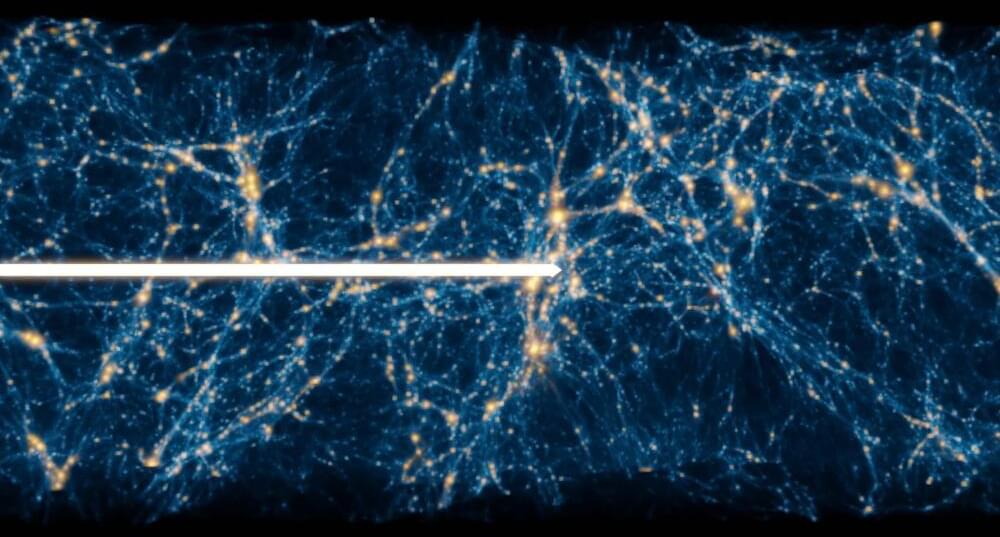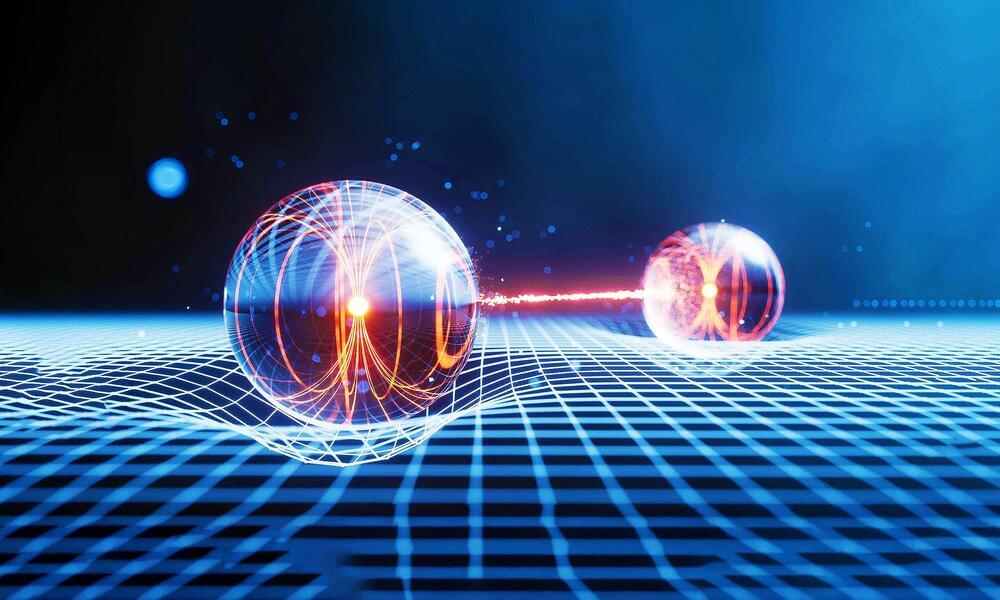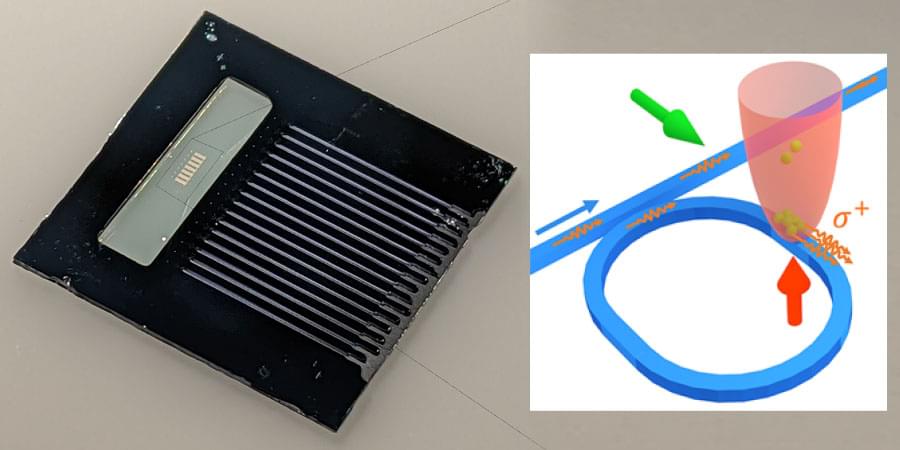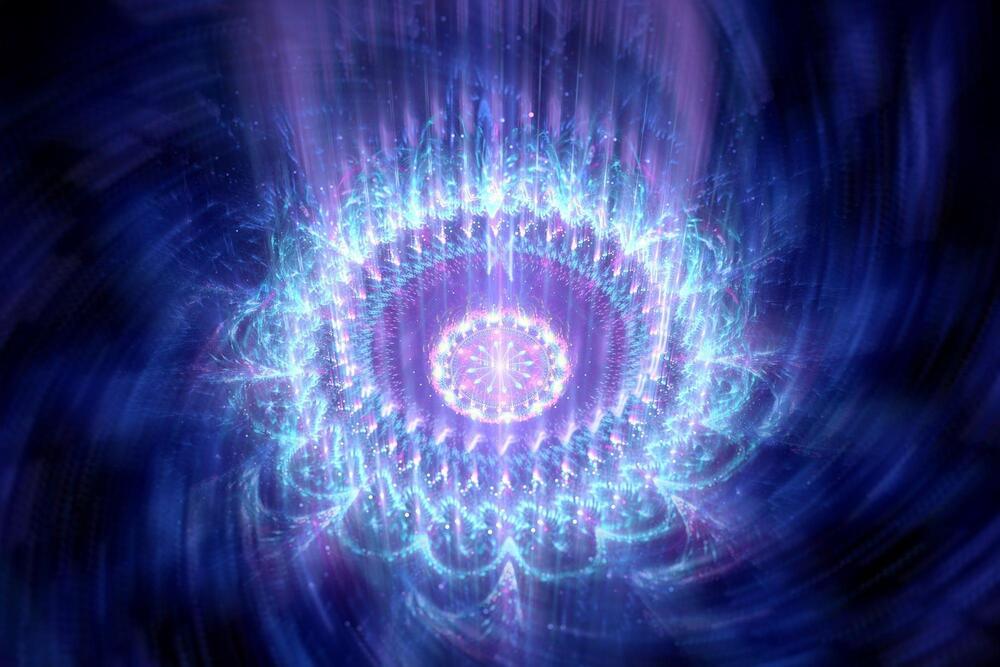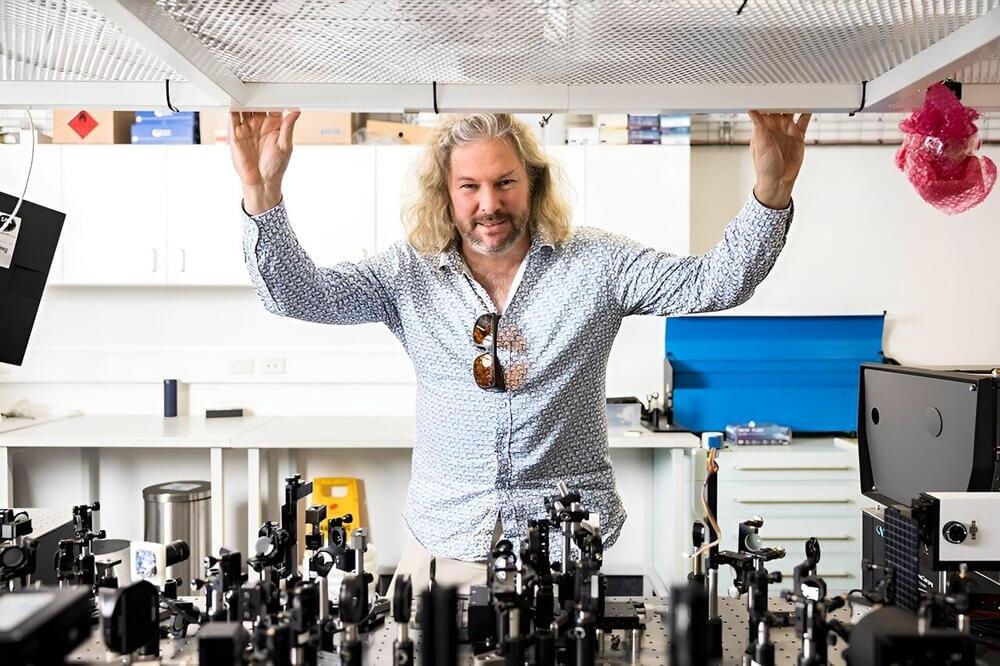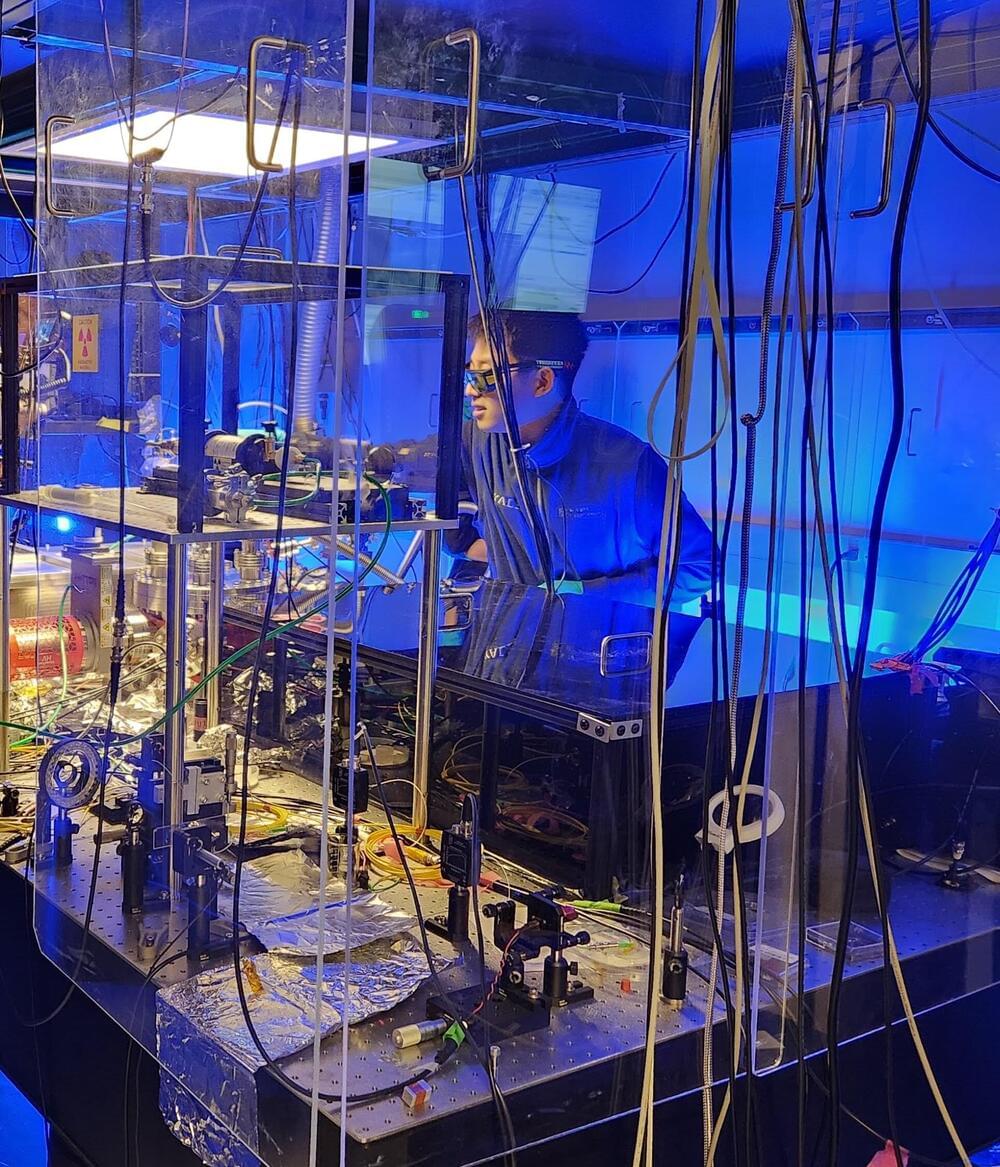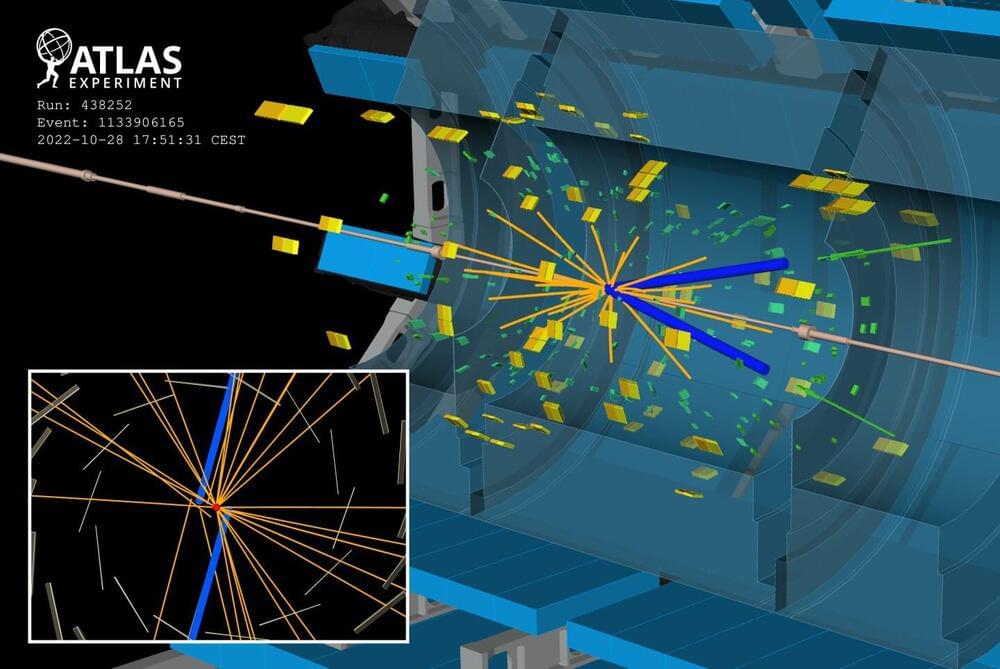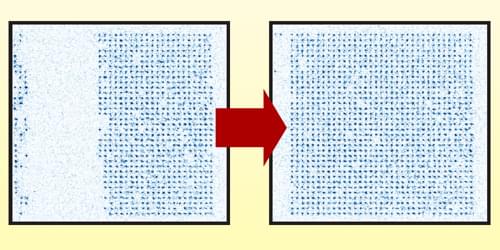The dense peaks in the wavelength distribution graph observed in a Lyman-Alpha forest indeed resemble many small trees. Each of those peaks represents a sudden drop in “light” at a specific and narrow wavelength, effectively mapping the matter that light has encountered on its journey to us.
Category: particle physics – Page 100
The captivating world of quantum mechanics is constantly evolving, revealing complexities that challenge our perception of reality. Recent advancements illuminate the puzzling wave functions of entangled photons, providing remarkable insights into the behavior of these fundamental particles.
At the forefront of this research are experts from the University of Ottawa and Sapienza University of Rome. Their innovative approach allows for real-time visualization of entangled photon wave functions, pushing the boundaries of what we thought possible in quantum science.
Quantum entanglement is a mind-boggling phenomenon that underscores the profound interconnectedness of two particles.
Researchers at Purdue University have trapped alkali atoms (cesium) on an integrated photonic circuit, which behaves like a transistor for photons (the smallest energy unit of light) similar to electronic transistors. These trapped atoms demonstrate the potential to build a quantum network based on cold-atom integrated nanophotonic circuits. The team, led by Chen-Lung Hung, associate professor of physics and astronomy at the Purdue University College of Science, published their discovery in the American Physical Society’s Physical Review X (“Trapped Atoms and Superradiance on an Integrated Nanophotonic Microring Circuit”).
“We developed a technique to use lasers to cool and tightly trap atoms on an integrated nanophotonic circuit, where light propagates in a small photonic ‘wire’ or, more precisely, a waveguide that is more than 200 times thinner than a human hair,” explains Hung, who is also a member of the Purdue Quantum Science and Engineering Institute. “These atoms are ‘frozen’ to negative 459.67 degrees Fahrenheit or merely 0.00002 degrees above the absolute zero temperature and are essentially standing still. At this cold temperature, the atoms can be captured by a ‘tractor beam’ aimed at the photonic waveguide and are placed over it at a distance much shorter than the wavelength of light, around 300 nanometers or roughly the size of a virus. At this distance, the atoms can very efficiently interact with photons confined in the photonic waveguide. Using state-of-the-art nanofabrication instruments in the Birck Nanotechnology Center, we pattern the photonic waveguide in a circular shape at a diameter of around 30 microns (three times smaller than a human hair) to form a so-called microring resonator. Light would circulate within the microring resonator and interact with the trapped atoms.”
A key aspect function the team demonstrates in this research is that this atom-coupled microring resonator serves like a ‘transistor’ for photons. They can use these trapped atoms to gate the flow of light through the circuit. If the atoms are in the correct state, photons can transmit through the circuit. Photons are entirely blocked if the atoms are in another state. The stronger the atoms interact with the photons, the more efficient this gate is.
Futurology: The global demand for AI computing has data centers consuming electricity like frat houses chug beer. But researchers from the University of Minnesota might have a wildly innovative solution to curb AI’s growing thirst for power with a radical new device that promises vastly superior energy efficiency.
The researchers have designed a new “computational random-access memory” (CRAM) prototype chip that could reduce energy needs for AI applications by a mind-boggling 1,000 times or more compared to current methods. In one simulation, the CRAM tech showed an incredible 2,500x energy savings.
Traditional computing relies on the decades-old von Neumann architecture of separate processor and memory units, which requires constantly moving data back and forth in an energy-intensive process. The Minnesota team’s CRAM completely upends that model by performing computations directly within the memory itself using spintronic devices called magnetic tunnel junctions (MTJs).
Grasping the precise energy landscapes of quantum particles can significantly enhance the accuracy of computer simulations for material sciences. These simulations are instrumental in developing advanced materials for applications in physics, chemistry, and sustainable technologies. The research tackles longstanding questions from the 1980s, paving the way for breakthroughs across various scientific disciplines.
An international group of physicists, led by researchers at Trinity College Dublin, has developed new theorems in quantum mechanics that explain the “energy landscapes” of quantum particle collections. Their work resolves decades-old questions, paving the way for more accurate computer simulations of materials. This advancement could significantly aid scientists in designing materials poised to revolutionize green technologies.
The new theorems have just been published in the prominent journal Physical Review Letters. The results describe how the energy of systems of particles (such as atoms, molecules, and more exotic matter) changes when their magnetism and particle count change. Solving an open problem important to the simulation of matter using computers, this extends a series of landmark works commencing from the early 1980s.
Scientists are closer to giving the next generation of solar cells a powerful boost by integrating a process that could make the technology more efficient by breaking particles of light—photons—into small chunks.
In a study published in Nature Chemistry researchers unravel the scientific understanding of what happens when light particles split—a process called singlet fission —and its underlying workings.
Lead researcher Professor Tim Schmidt from UNSW Sydney’s School of Chemistry has studied singlet fission for more than a decade. He says the process could be invoked and applied to improve existing silicon solar cell technologies.
In recent years, physicists and engineers have developed increasingly sophisticated instruments to study particles and the interactions between them with high precision. These instruments, which include particle detectors, sensors and accelerometers, could help researchers to study physical processes in greater detail, potentially contributing to interesting new discoveries.
Scientists from the U.S. Department of Energy’s (DOE) Brookhaven National Laboratory have created the first-ever atomic movies showing how atoms rearrange locally within a quantum material as it transitions from an insulator to a metal. With the help of these movies, the researchers discovered a new material phase that settles a yearslong scientific debate and could facilitate the design of new transitioning materials with commercial applications.
Despite its immense success in describing the fundamental building blocks of matter and their interactions, the Standard Model of particle physics is known to be incomplete. Experiments around the globe and in space are therefore searching for signs of new physics phenomena that would guide physicists towards a more comprehensive theory.
In most neutral-atom quantum computers, atoms are held in arrays of optical tweezers. Researchers typically populate the arrays stochastically, meaning that whether a given site receives an atom is down to chance. Atoms can later be rearranged individually, but the total number of atoms depends on the success of the initial loading.
The Atom Computing team developed an iterative process to fill an array to capacity. Instead of filling the array directly, the researchers first stochastically populated a second “reservoir” array. They then transferred atoms one by one from this reservoir to the target array using an optical tweezer. Between each loading step, the researchers imaged both arrays to determine which sites in each array were occupied. This step required temporarily switching off the tweezers and holding the atoms in an optical lattice formed from interfering laser beams.
The researchers showed that this sequence could be repeated as many times as necessary without losing atoms from the target array. They also showed that they could limit atom loss during the imaging step by enhancing the lattice strength using optical cavities. This enhancement allowed the atoms to be more strongly confined without increasing the optical lattice’s laser-power requirements.
